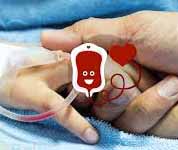Stress in primary caregiver of children with malignant hematological disease
Keywords:
HEMATOLOGIC DISEASES, STRESS, CHILD.Abstract
Introduction: at present the study of stress in primary or main caregiver is considered of great impact in a general sense, which represents this figure for the patient.
Objective: to characterize stress in the primary or main caregiver in pediatric onco-hematology service of Pinar del Río.
Method: a descriptive and cross-sectional study. The sample consisted of 40 caregivers of patients with hematologic malignancies from May 2016 to January 2017. Observation, documentary analysis, interview, stress vulnerability test, IDARE inventory to assess anxiety and IDERE method for the diagnosis of depression was applied.
Results: stress is reported in all cases, anxiety and depression reach high rates, and fear, nervousness, anger in addition to irritability are described within the most represented emotional manifestations, where health is of a great importance for children, with great impact on physical and emotional well-being of the caregiver, generating levels of stress.
Conclusions: the quality and intensity of the feelings experienced during emotional stimulation seem to be the most peculiar and important characteristics in this whole process. The perception of health status is experienced by the caregiver allowing him/her to value the fact that behind a seemingly order there is a well-structured belief of disease and gravity, generating fear that is associated with anxiety and depression.
Downloads
References
1- Vega Verdugo R. Estrés, salutogénesis y vulnerabilidad: repercusiones para la psicología de la salud contemporánea. Psicología de la Salud [Internet]. 2014 [citado 2017 feb 20]. Disponible en: https://dialnet.unirioja.es/servlet/articulo?codigo=5011552
2- Reyes Ortiz E. El diálogo como herramienta para el desarrollo del autoconcepto, la autoestima y la asertividad [Internet]. España: Universitas Malacitana; 2017. [citado 2017 feb 20]. Disponible en: http://dspace.uma.es/xmlui/bitstream/handle/10630/12701/Reyes%20Ortiz_TFG_Educaci%C3%B3n%20Social.pdf?sequence=1
3- Atalaya M. El estrés laboral y su influencia en el trabajo. Industrial data [Internet] 2001 [citado 2016 jun 23];4(2): [aprox. 9 p.]. Disponible en: http://revistasinvestigacion.unmsm.edu.pe/index.php/idata/article/view/6754
4- Begara O, Bascoy A.Activación contra la depresión [Internet]. España: Psicoactiva; 2017. [citado 2017 feb 20]. Disponible en: http://www.lne.es/blogs/psicoactiva-mente/activacion-contra-la-depresion.html.
5- Rodriguez MJ. Estrés psicosocial y enfermedad. España: Editorial Síntesis S.A. Madrid;2013. p.214.
6- Boletín de Información Clínica Terapéutica. El trastorno de ansiedad generalizada. Rev Fac Med.(Méx) [Internet]. 2013 Ago [citado 2017 Ene 23]; 56(4): [aprox. 9]. Disponible en: http://www.scielo.org.mx/scielo.php?script=sci_arttext&pid=S0026-17422013000400009&lng=es.
7- Lazarus R, Folkman, S. Estrés y procesos cognitivos. Barcelona: Ediciones Martínez Roca; 1986. https://www.casadellibro.com/libro-estres-y-procesos-cognitivos/9788427010130/90173
8- Guirotane IM. Impacto psicológico del diagnóstico de cáncer en madres de niños oncológicos [Internet]. Argentina: Univ Abierta Interamericana; 2012[citado 2016 jun 16]. 6(2) : [aprox. 17 p.]. Disponible en: http://imgbiblio.vaneduc.edu.ar/fulltext/files/TC112555.pdf .
9- Ribeiro Maysa F, Luiza Lima S, Vandenberghe L, Porto Celmo C. Estrés familiar en madres de niños y adolescentes con parálisis cerebral. Rev. Latino-Am. Enfermagem[Internet]. 2014 June [cited 2017 Apr 26];22(3): [Aprox 447.p]. Available from: http://www.scielo.br/scielo.php?pid=S0104 11692014000300440&script=sci_arttext&tlng=es
10-Vieco Gómez GF, Llanos AR. Factores psicosociales de origen laboral, estrés y morbilidad en el mundo. Psicología desde el Caribe [Internet]. 2014 May-Ago [citado 2017 Feb 20]; 31(2):[aprox. 25 p.]. Disponible en: http://reme.uji.es/articulos/agarce4960806100/texto.html
11-Fernández Abascal E, Martín MD, Jiménez P, Estudio sobre la escala de estilos y estrategias de afrontamiento (E3A). Revista Electrónica de Motivación y Emoción [Internet]. 2012 [citado 2015 Mar 10]; 3(4): [aprox. 5 p.]. Disponible en: http://reme.uji.es/articulos/agarce4960806100/texto/html.
12- González Ramírez MT, Landero R. Confirmación de un modelo explicativo del estrés y de los síntomas psicosomáticos mediante ecuaciones estructurales, Rev. Anales de Psicología [Internet]. 2014 [citado 2017 Mar 10];30(1):[aprox. 12 p.]. Disponible en: http://www.scielosp.org/scielo.php?script=sci_arttext&pid=S1020-49892008000100002 .

Published
How to Cite
Issue
Section
License
Authors who have publications with this journal agree to the following terms: Authors will retain their copyrights and grant the journal the right of first publication of their work, which will be publication of their work, which will be simultaneously subject to the Creative Commons Attribution License (CC-BY-NC 4.0) that allows third parties to share the work as long as its author and first publication in this journal are indicated.
Authors may adopt other non-exclusive license agreements for distribution of the published version of the work (e.g.: deposit it in an institutional telematic archive or publish it in a volume). Likewise, and according to the recommendations of the Medical Sciences Editorial (ECIMED), authors must declare in each article their contribution according to the CRediT taxonomy (contributor roles). This taxonomy includes 14 roles, which can be used to represent the tasks typically performed by contributors in scientific academic production. It should be consulted in monograph) whenever initial publication in this journal is indicated. Authors are allowed and encouraged to disseminate their work through the Internet (e.g., in institutional telematic archives or on their web page) before and during the submission process, which may produce interesting exchanges and increase citations of the published work. (See The effect of open access). https://casrai.org/credit/


